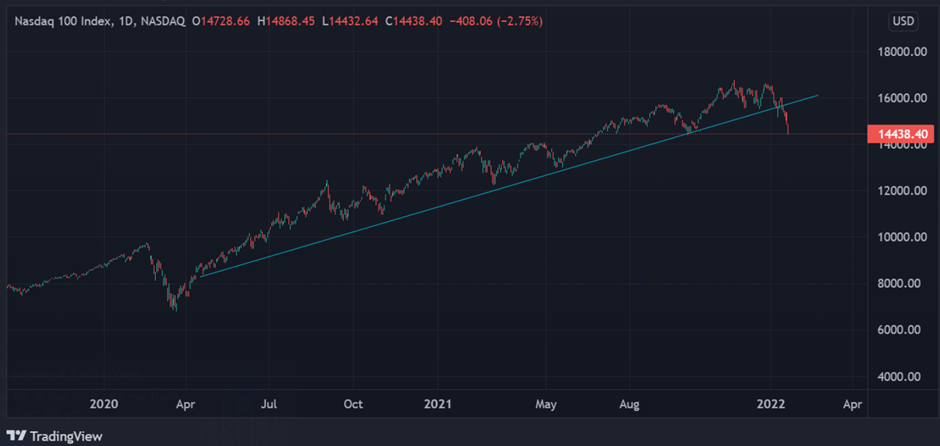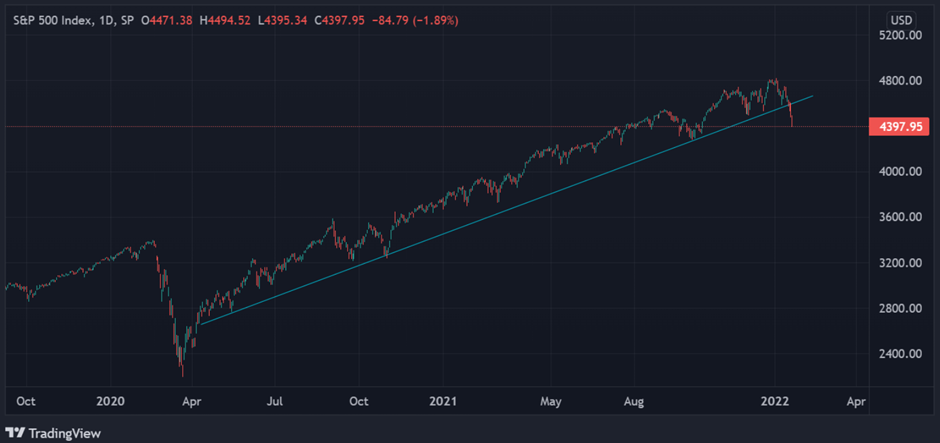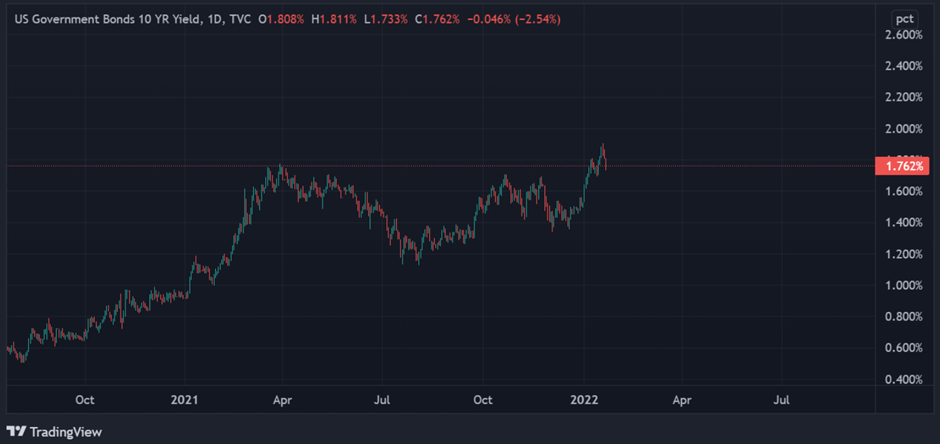As global Omicron cases grow in certain countries, the US and China play tit for tat regarding their local airlines arriving in the respective foreign country. Both have now suspended travel of around 44 flights destined for locations in the US and China.
As Russian troops increase at the Ukraine border, geopolitical tensions rise between Russia and the US. Senator Jeanne Shaheen stated,
"The United States is presently calculating the costs to European allies if the United States takes SWIFT action,"
The Chinese economy increased Y/Y and Q/Q, above expectations by 0.4 percent and 0.5 percent, respectively. This is due to a favorable trade surplus and robust Y/Y industrial production. Local consumer spending, on the other hand, has dropped dramatically, with retail sales falling short of expectations by 2% in December.
CPI statistics from South Africa, Germany, the United Kingdom, and Canada all outperformed expectations, indicating a reflationary trade adjustment. South Africa has outperformed its developing market counterparts this week, as investors anticipate a rate increase in the coming week.
In the United Kingdom, inflation has reached a 30-year high, putting pressure on the Bank of England to raise interest rates.
Technical Overview
We have a big week for Central Banks ahead of us. However, all eyes will be on the Fed to determine the tone of hawkishness as inflation continues to rise. Wall Street will remain on edge after both S&P 500 (Down 7.73% from the beginning of 2022) and NASDAQ (Down 11.53% from the beginning of 2022) broke their long-term support line.
The Fed hawkishness later this week, coupled with clarity on the number of rate hikes due, may put further pressure at S&P Fibonacci price support level 4216.51 and NASDAQ Fibonacci price support level 14430.32.

The 10-Year Treasury continues to shine overall despite the recent downward pressure. Since 2022, the US 10 Year is up 17.12%. We anticipate a near-term pullback to the 1.701% level before pushing higher.

The Week Ahead
In terms of key data releases this week, the remaining major economies will release CPI data (Australia, New Zealand, and Japan), while others will provide insight into manufacturing and services via PMI data from Japan and France who have released the data already, Germany, the United Kingdom, the European Union, and the United States.
While we do not expect the Fed to raise interest rates at this meeting, the tone of the speech will be closely scrutinized. As CPI approaches the top of the target band of 6%, the South African Reserve Bank is 75 percent likely to hike rates this week. We support the SARB hiking interest rates this week to avoid a shock from bullish oil prices this quarter.
